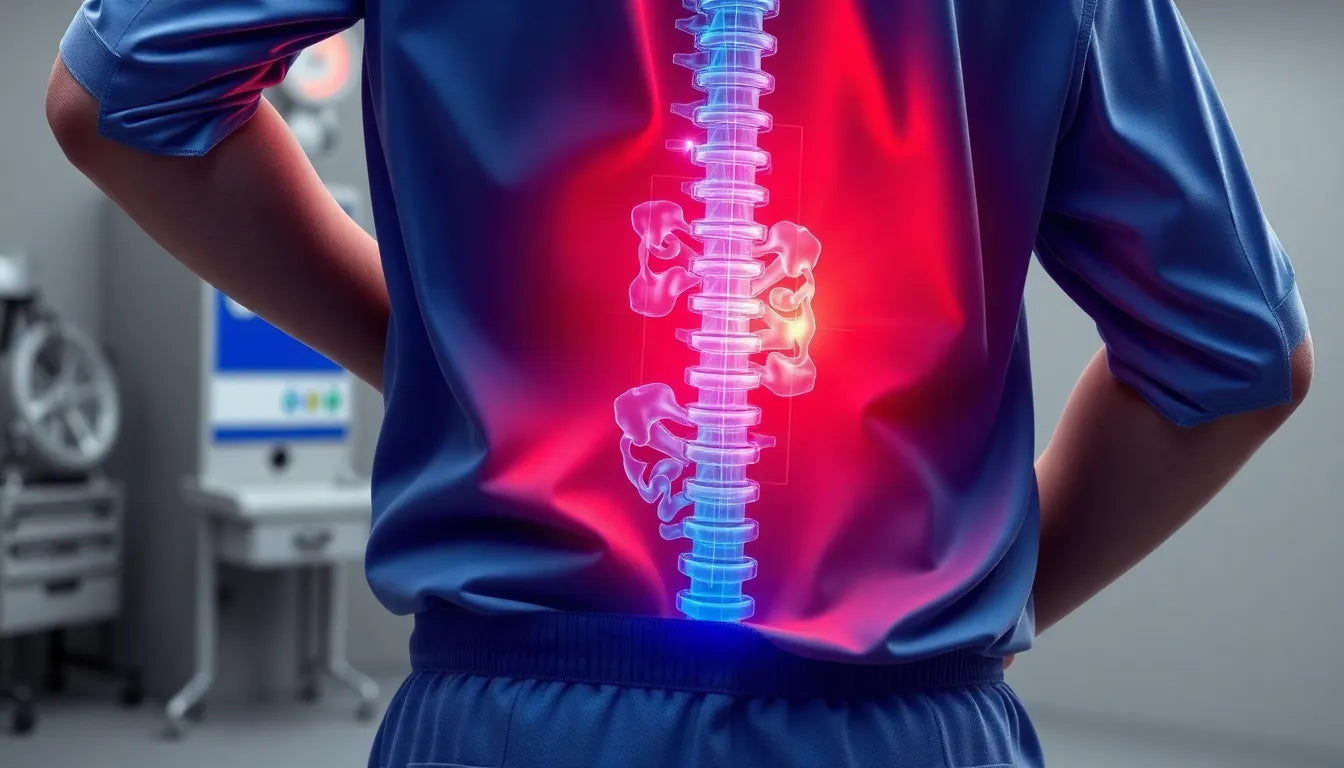Recovering from herniated disc surgery can be a transformative journey, offering a chance to return to a life free from the debilitating pain that once limited daily activities. Understanding the recovery process is crucial for patients who have undergone this surgery, particularly those who have had a microdiscectomy, a common procedure aimed at relieving nerve compression. Successfully navigating this path requires a blend of patience, adherence to medical advice, and a clear understanding of what is allowed after herniated disc surgery.
understanding the recovery journey
The recovery journey after herniated disc surgery is structured and requires careful attention to timelines and guidelines set by healthcare professionals. Initially, the focus is on rest and healing, gradually progressing to a more active lifestyle as the body recovers. This journey is marked by specific phases, each with its own set of activities and restrictions designed to protect the spine and ensure optimal healing.
In the first few days post-surgery, patients are encouraged to focus on rest and effective pain management. Gentle activities, such as short walks, are introduced early to promote circulation and prevent complications. As the weeks progress, the focus shifts to avoiding movements that could jeopardize recovery, such as bending, lifting, and twisting. This phase also involves adapting daily activities to accommodate healing, ensuring that patients do not rush back into strenuous tasks too soon.
As patients move into the mid-term recovery phase, typically between five to twelve weeks post-surgery, there is a gradual increase in physical activity. This period often includes light exercises and physical therapy to rebuild strength and flexibility. Depending on the nature of their job, some individuals may begin returning to work, albeit with modifications to avoid overexertion.
The long-term recovery phase, extending beyond twelve weeks, allows patients to return to modified normal activities while maintaining some permanent restrictions to protect the spine. Continued physical therapy and exercises focused on spine health are crucial during this phase to prevent re-injury and ensure lasting recovery.
This blog post will delve deeper into these recovery timelines, explore common activity restrictions, and provide guidance on the gradual reintegration into daily life. By understanding what is allowed after herniated disc surgery, patients can confidently navigate their recovery journey and embrace a pain-free future.
recovery timeline after herniated disc surgery
The journey to recovery after herniated disc surgery is a carefully structured process, with each phase designed to ensure optimal healing and prevent complications. Understanding this timeline can help patients know what to expect and how to best support their recovery.
immediate post-surgery (1-3 days)
In the days immediately following surgery, rest is paramount. Patients are advised to minimize movement to allow the surgical site to begin healing. However, short, frequent walks are encouraged to promote blood circulation and reduce the risk of blood clots. Effective pain management is crucial during this period, and patients should adhere strictly to their prescribed medication regimen to manage discomfort.
early recovery (0-4 weeks)
During the first few weeks post-surgery, patients should be mindful of specific activity restrictions. It is essential to avoid bending, lifting, and twisting, as these movements can strain the healing spine. Prolonged sitting and standing should also be avoided, and patients may need assistance with daily tasks to prevent overexertion. This phase is critical for laying a solid foundation for recovery, and adherence to these guidelines can significantly impact long-term outcomes.
mid-term recovery (5-12 weeks)
As patients enter the mid-term recovery phase, they can gradually increase their physical activity levels. Light exercises and physical therapy become integral components of recovery, helping to rebuild strength and flexibility. Depending on the nature of their job, some individuals may begin returning to work, though modifications may be necessary to accommodate their healing process. Activities should be carefully monitored and adjusted to ensure they do not hinder recovery.
long-term recovery (12+ weeks)
Beyond twelve weeks, patients can start transitioning back to modified normal activities. However, some permanent restrictions may remain to protect the spine and prevent re-injury. Continued physical therapy and exercises focusing on spine health are vital to maintaining improvements and preventing future issues. This phase emphasizes the importance of adopting a lifestyle that supports long-term spine health.
common restrictions after herniated disc surgery
Understanding and adhering to activity restrictions is crucial for a successful recovery. These restrictions are designed to protect the spine and facilitate healing.
short-term restrictions (0-6 weeks)
During the initial weeks following surgery, patients should avoid driving, particularly long car rides, to prevent jarring movements that could affect the spine. Bending, twisting, and lifting should be strictly avoided, as these actions can strain the healing area. Work restrictions are also common, with many patients returning to less strenuous jobs after four to eight weeks, depending on their recovery progress and job demands.
long-term or permanent restrictions
Even after the initial recovery period, certain activities should be permanently avoided to prevent re-injury. Heavy lifting is particularly discouraged, as the spine remains vulnerable following surgery. High-impact activities, such as running or contact sports, pose significant risks and should be approached with caution. Additionally, patients may notice some reduced flexibility and range of motion, which should be considered when planning physical activities.
evolving approaches to recovery
Recovery strategies for herniated disc surgery have evolved over time. Traditional approaches often emphasized extended periods of rest and strict activity limitations. However, newer research suggests that earlier mobilization and less restrictive protocols can be beneficial for many patients. Studies indicate that patients who engage in controlled, early activity may experience faster returns to work and daily activities. This shift highlights the importance of personalized recovery plans that consider individual patient needs and circumstances.
By understanding the recovery timeline and adhering to recommended restrictions, patients can navigate their path to recovery with confidence. Embracing evolving approaches to recovery and maintaining open communication with healthcare providers can further enhance outcomes and support a successful return to a pain-free life.
personalized recovery plans for herniated disc surgery
Recovery from herniated disc surgery is not a one-size-fits-all process. Each patient's journey can differ significantly based on factors such as age, overall health, and the specific surgical technique used. Personalized recovery plans are essential to accommodate these variations and ensure optimal healing. For instance, younger patients may recover faster and can gradually increase activity levels sooner, while older patients or those with pre-existing health conditions might require a more cautious approach.
Healthcare providers play a crucial role in crafting these individualized plans, taking into account the patient's lifestyle, job demands, and personal goals. By tailoring recovery strategies to meet individual needs, patients can navigate their path to recovery more effectively, reducing the risk of complications and enhancing overall outcomes.
practical daily living guidance
Adapting to daily life after herniated disc surgery involves making ergonomic adjustments to protect the spine and promote healing. Simple changes, such as using a lumbar support pillow while sitting or adjusting the height of workstations, can make a significant difference in comfort and recovery. Additionally, tools and assistive devices, like grabbers for picking up items without bending or shower chairs to prevent slips, can aid in maintaining independence during recovery.
Patients should also consider modified approaches to routine tasks. For example, instead of bending at the waist, it's advisable to squat or use a reacher tool. These adjustments help minimize strain on the spine and support a smoother recovery process.
return-to-work strategies
Returning to work after herniated disc surgery requires careful planning and often involves workplace accommodations. Depending on the job's physical demands, some patients may need to transition back gradually, starting with reduced hours or modified duties. Employers are often willing to make reasonable accommodations, such as providing ergonomic office equipment or allowing flexible schedules, to support the employee's recovery.
It's important for patients to communicate openly with their employers about their recovery needs and to understand their legal rights regarding workplace accommodations. Consulting with healthcare providers can also help determine the appropriate time to resume work activities and ensure that the transition does not compromise the healing process.
long-term spine health
Maintaining spine health after herniated disc surgery is crucial to prevent re-herniation and ensure lasting recovery. Patients are encouraged to adopt a lifestyle that supports spine health, which includes regular exercise, maintaining a healthy weight, and practicing good posture. Exercises that strengthen the core muscles, such as yoga or Pilates, can provide additional support to the spine and reduce the risk of future injuries.
Incorporating these lifestyle modifications not only aids in recovery but also enhances overall well-being, allowing patients to enjoy a more active and pain-free life.
frequently asked questions
When can I drive after herniated disc surgery?
The timeline for resuming driving varies depending on individual recovery progress and medical advice. Generally, patients are advised to avoid driving for at least two to four weeks post-surgery, or until they can comfortably sit and perform emergency stops without pain.
How long before I can return to work?
The return-to-work timeline depends on the nature of the job and the patient's recovery. Typically, patients with desk jobs may return within four to eight weeks, while those with physically demanding roles might require a longer recovery period. It's essential to consult with healthcare providers to determine the appropriate time based on individual circumstances.
What activities should I avoid permanently?
To protect the spine, patients should avoid heavy lifting and high-impact activities such as running or contact sports. These activities can increase the risk of re-injury. Instead, focus on low-impact exercises and activities that support spine health.
How can I prevent future herniated discs?
Preventing future herniated discs involves maintaining a healthy lifestyle, including regular exercise, weight management, and practicing proper posture. Strengthening core muscles and avoiding activities that strain the spine are also key strategies in maintaining spine health.
Sources
- Spine-health. "Microdiscectomy (Microdecompression) Spine Surgery."
- Atlantic Spine Center. "Recovery After Microdiscectomy Surgery."
- Neurosurgeons of New Jersey. "What to Expect After Microdiscectomy Surgery."
- Dr. Liu, C. (2020). "Activity Restrictions After Lumbar Microdiscectomy: A Review." BMJ.
- ADR Spine. "Herniated Disc Surgery Recovery: What You Need to Know."


















